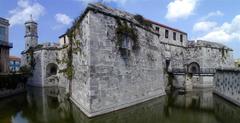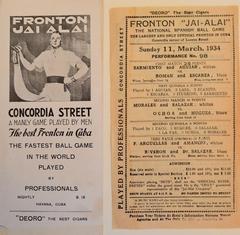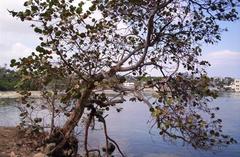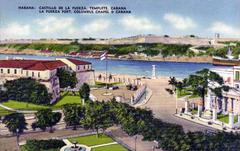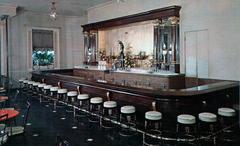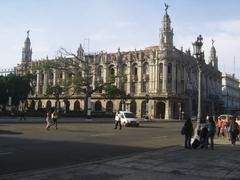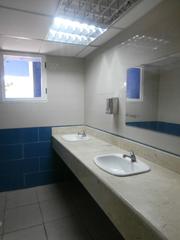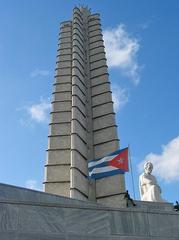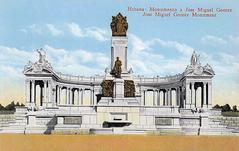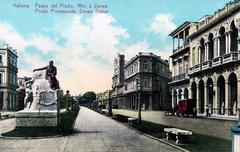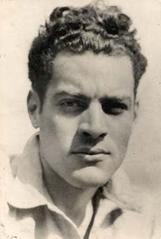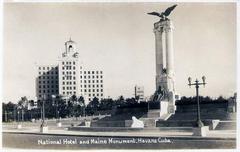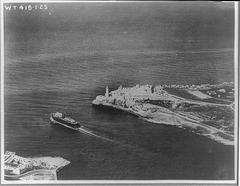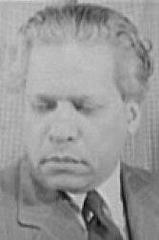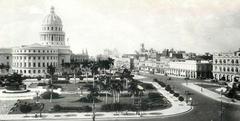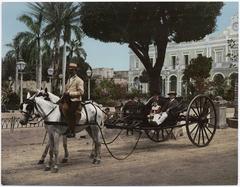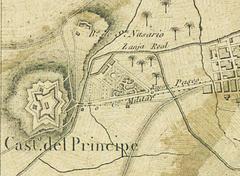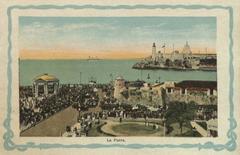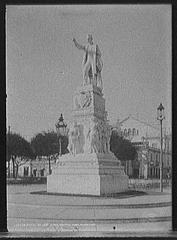Tarará Visiting Guide: Havana Province, Cuba – Tickets, Hours, and Attractions
Date: 04/07/2025
Introduction to Tarará
Nestled along Cuba’s northern coast just east of Havana, Tarará stands out as a captivating blend of pristine beaches, striking architecture, and rich historical significance. As part of Havana Province’s renowned Playas del Este, Tarará offers visitors tranquil white-sand shores, iconic Art Deco and mid-century villas, and connections to Cuba’s revolutionary heritage. Perfect for beach lovers, history enthusiasts, and cultural explorers, Tarará is an authentic destination where Cuba’s past and present intertwine.
Originally established between 1912 and 1943 as Latin America’s first gated community, Tarará has transitioned from an elite resort to a hub for education and humanitarian work, all while preserving its coastal allure. Today, guests enjoy free public beach access, a marina with nautical activities, and the emblematic Tarará Lighthouse—a testament to Cuba’s maritime legacy.
Accessible by car, taxi, or public transport via the Via Blanca highway, Tarará is ideal for both day-trips and extended stays. Amenities include local eateries, cultural events, wellness facilities, and easy access to Havana’s urban offerings. Whether you’re photographing restored villas, taking part in local festivals, or basking in the Atlantic breeze, Tarará provides a distinctive window into Cuban life.
For up-to-date visitor resources and travel planning, consult official tourism portals and local visitor centers (Cuba Travel), (Sabi Abuja), and (tararalighthouse.cu).
Table of Contents
- Introduction
- Visiting Tarará: Hours, Tickets, and Access
- What to See and Do in Tarará
- Amenities and Services
- Guided Tours and Special Events
- Photography Tips
- Frequently Asked Questions (FAQ)
- Historical Overview
- Cultural and Architectural Significance
- Plan Your Visit
- Tarará Beach Guide
- Tarará Beach and Marina
- Beaches and Waterfront Activities
- Tarará Marina and Nautical Activities
- Historical and Architectural Exploration
- Cultural and Community Events
- Wellness and Recreation Facilities
- Dining and Local Cuisine
- Day Trips and Excursions
- Water Safety and Environmental Awareness
- Family-Friendly Activities
- Accessibility and Transportation
- Practical Visitor Information
- Unique Experiences
- Frequently Asked Questions (FAQ)
- Monumental Guide to Tarará Lighthouse
- Introduction to Tarará Lighthouse
- History and Cultural Significance
- Key Features of Tarará Lighthouse
- Visiting Hours and Ticket Information
- How to Get There
- Accessibility
- Nearby Attractions
- Practical Visitor Information
- Sustainability and Conservation Efforts
- Frequently Asked Questions (FAQ)
- Related Historical Sites
- External Resources
- Call to Action
Visiting Tarará: Hours, Tickets, and Access
Is Tarará Open to the Public?
Yes, Tarará is accessible to visitors. While it remains primarily a residential area, the beaches and marina are open to the public with no entrance fees or special ticketing required.
Best Times to Visit
The ideal period is the dry season (November to April), offering pleasant weather for outdoor and beach activities. The rainy season (May to October) brings brief showers but usually doesn’t disrupt visits (Cuba’s Best).
How to Get There
- Car or Taxi: 20–30 minutes from central Havana via the Via Blanca highway. Taxis and rental cars are convenient and widely available.
- Public Transport: Limited bus services connect to Tarará, especially during peak seasons. Confirm current schedules locally.
Accessibility
Tarará features flat, pedestrian-friendly streets and accessible beach entry points. However, some older villas and infrastructure may present challenges for those with mobility limitations.
What to See and Do in Tarará
Architectural Highlights
Stroll through avenues lined with striking Art Deco and mid-century villas, many with original details such as arched porticos and terracotta roofs. Some serve as guesthouses or cultural centers, offering glimpses into Cuba’s architectural past.
Beaches and Nature
Tarará’s main beach boasts soft, white sand and clear waters ideal for swimming, sunbathing, kayaking, and paddleboarding. The relaxed setting is less crowded than neighboring beaches, making it perfect for families and couples.
Historical Sites
- Che Guevara’s Villa: The site where Guevara recovered from asthma and wrote “Guerrilla Warfare.”
- Soviet-Era Murals: Colorful reminders of the area’s Cold War history.
- Tarará Lighthouse: A maritime monument offering panoramic coastal views (tararalighthouse.cu).
Nearby Attractions
- Playas del Este: Additional beaches like Santa María del Mar and Guanabo.
- Havana’s Historic Center: UNESCO World Heritage Site with colonial architecture and museums.
- Marina Hemingway: Nearby marina for boating and fishing trips.
Amenities and Services
Tarará offers a selection of small local eateries, beach cafés, and paladares serving fresh seafood and Cuban classics. Essential services such as supermarkets, pharmacies, and clinics are found in nearby Guanabo and Alamar. Recreational facilities include a swimming pool complex, tennis courts, fitness center, playgrounds, and sports fields.
Guided Tours and Special Events
Local tour operators and Havana-based agencies organize day trips to Tarará, often combining beach time with historical sightseeing. Summer months bring open-air concerts, art exhibitions, and local festivals. Check community boards or tourist centers for event schedules.
Photography Tips
Morning and sunset light highlight Tarará’s architectural contrasts and tranquil seascapes. Capture the interplay between restored villas and weathered buildings, or panoramic views from the lighthouse and marina.
Frequently Asked Questions (FAQ)
Q: Do I need tickets to visit Tarará?
A: No, public beach access is free; some facilities may charge for specific activities.
Q: What are Tarará’s visiting hours?
A: Beaches are open sunrise to sunset. Marina and recreational facilities generally operate 8:00 AM – 6:00 PM.
Q: Are guided tours available?
A: Yes, through local operators and tourist information centers.
Q: Is Tarará family-friendly?
A: Yes, with safe waters, playgrounds, and organized activities for children.
Historical Overview
Origins and Early Development
Tarará was founded between 1912 and 1943 as Latin America’s first gated residential community, featuring more than 500 Art Deco homes. Its name is linked to a trumpet signal used in a 16th-century local copper mine.
Tarará Before the Revolution
In the 1940s–50s, Tarará was a fashionable retreat for Cuba’s upper classes and American tourists, featuring amenities like a yacht club, theaters, and private beaches.
Post-Revolutionary Transformation
After 1959, Tarará’s properties were nationalized. It became the “City of Students” and later a pioneer camp for Soviet-bloc youth, with murals reflecting socialist ideals.
Che Guevara and the Tarará Group
Che Guevara recovered here in 1959, forming the “Tarará Group” and writing “Guerrilla Warfare.” The area is linked to his revolutionary legacy.
Soviet Era and Humanitarian Role
During the 1980s–90s, Tarará hosted Soviet officials and later became a recovery center for children affected by the Chernobyl disaster, as well as patients from other countries.
Recent Developments
In recent years, Tarará has hosted foreign representatives and international students, while efforts continue to restore its historic villas and community spaces.
Cultural and Architectural Significance
Tarará’s unique blend of Art Deco and Soviet-influenced architecture, set against lush coastal scenery, offers a window into Cuba’s layered history and evolving identity.
Plan Your Visit
Combine your trip to Tarará with a tour of Havana’s historic center. Bring sun protection, swimwear, and a camera. For updated information, visit the Playa del Este Tourist Information Center or check (Cuba Travel).
Tarará Beach Guide
Location and Accessibility
Tarará is located 19 km east of Havana, accessible via Via Blanca highway by car, taxi, or public bus. The area is compact and walkable, with bicycle rentals available.
Visiting Hours and Ticket Information
Public beach access: sunrise to sunset, free of charge. Marina and certain recreational facilities may have set hours and fees.
Physical Geography and Natural Features
- Coastal Setting: Fine white sand, turquoise waters, natural dunes, palm groves.
- Climate: Tropical; July temperatures average 30–32°C (86–90°F). Sea temperature around 28°C (82°F).
- Flora and Fauna: Sea grapes, coconut palms, pelicans, gulls, and marine life for snorkeling and fishing.
Urban Layout and Infrastructure
Mid-century villas, marina, sports courts, playgrounds, and green spaces. Services are mainly in nearby Guanabo and Alamar.
Environmental Considerations
Beaches are maintained by local authorities. Respect conservation guidelines: dispose of waste properly, avoid damaging dunes, and use reef-safe sunscreen.
Connectivity and Transportation
Private vehicles, taxis, collectivos, and public buses provide access. Parking is limited during peak times.
Surrounding Attractions
Use Tarará as a base to explore Playas del Este—Santa María del Mar, Guanabo—and Havana’s historic center.
Visitor Tips and Accessibility
- Flat, pedestrian-friendly layout.
- Some older buildings may be less accessible.
- Guided tours, bike rentals, and water sports available.
Tarará Beach and Marina
Beaches and Waterfront Activities
Calm, family-friendly beach with water sports (kayaks, paddleboards, snorkeling). Coral reefs nearby for exploration (Sabi Abuja).
Tarará Marina and Nautical Activities
Open 8:00 AM–6:00 PM. Offers deep-sea fishing charters, boat rentals, catamaran cruises, and diving trips.
Historical and Architectural Exploration
Tree-lined streets showcase mid-century and Mediterranean Revival villas. Some are guesthouses or cultural centers (advance booking may be required).
Cultural and Community Events
Open-air concerts, art exhibitions, and dance performances in summer; parades and food stalls during national holidays.
Wellness and Recreation Facilities
Swimming pools, tennis courts, yoga classes, and fitness centers. Bicycle rentals for exploring coastal trails.
Dining and Local Cuisine
Cafés and paladares serve seafood (grilled fish, lobster), Cuban classics, and tropical cocktails (Expert Vagabond). Most restaurants open 11:00 AM–10:00 PM.
Day Trips and Excursions
Excursions to Santa María del Mar, Guanabo, and Havana’s historic center. Nature tours include horseback riding and hiking (Sabi Abuja).
Water Safety and Environmental Awareness
Lifeguards present during peak times; observe posted safety warnings. Community-led beach clean-ups promote conservation.
Family-Friendly Activities
Playgrounds, organized children’s activities, and family-oriented amenities.
Accessibility and Transportation
Accessible by taxi, car, or bicycle. Parking can be limited on weekends.
Practical Visitor Information
- Tickets & Fees: Beach access free; fees for rentals and tours.
- Best Time to Visit: Dry season (Nov-April); rainy season may bring brief showers (EntryCubaForm).
- Health & Safety: Drink bottled water (Little Things Travel); health insurance required.
- Connectivity: Internet is limited; Wi-Fi at hotels and hotspots.
- Etiquette: Basic Spanish appreciated; respectful behavior enhances experience (Lonely Planet).
Unique Experiences
- Stunning sunrises and sunsets.
- Photography of heritage villas and community life.
- Wellness retreats with spa and holistic therapies.
Monumental Guide to Tarará Lighthouse
Introduction
Tarará Lighthouse is an iconic maritime monument on Havana’s eastern coast, guiding sailors for decades and reflecting Cuba’s nautical traditions.
History and Cultural Significance
Built in the 1950s, it played a vital role in navigation and coastal safety, especially during Tarará’s era as an elite yacht club and retreat.
Key Features
- Architecture: Cylindrical tower (15m), white facade, red lantern.
- Light Range: 18 nautical miles.
- Views: Panoramic Caribbean coastline vistas.
Visiting Hours and Ticket Information
- Open: Wednesday–Sunday, 9:00 AM–5:00 PM.
- Admission: 5 CUP (~$0.20 USD); student and senior discounts.
- Guided Tours: 10:00 AM and 3:00 PM; advance booking advised.
How to Get There
20–30 minutes by car or taxi from Havana; bus routes with final taxi transfer.
Accessibility
Wheelchair-accessible paths and ramps; tower access may be limited.
Nearby Attractions
Explore Tarará’s villas, beach, and marina.
Practical Visitor Information
Restrooms, café, and gift shop on-site. Lifeguards at nearby beaches.
Sustainability and Conservation
The lighthouse is part of heritage preservation efforts—visitors are encouraged to protect the site and environment.
Frequently Asked Questions (FAQ)
Q: Is photography allowed inside the lighthouse?
A: Yes, but flash and tripods are not permitted inside the tower.
Q: Are pets allowed?
A: No, to maintain cleanliness and safety.
Q: Can I visit at night?
A: No, night visits are not allowed for safety reasons.
Q: Are refreshments available?
A: Yes, on-site café and nearby dining in Tarará.
Related Historical Sites
External Resources
Call to Action
For more on Cuba’s monuments, download the Audiala app for interactive guides and tips. Plan your visit to Tarará Lighthouse and other Havana landmarks today!
Photo suggestion: Tarará Lighthouse at sunset, white tower against the sea (alt: Tarará Lighthouse overlooking the Caribbean Sea at sunset).
Summary: Tips and Recommendations
Tarará is a multifaceted coastal destination where natural beauty, history, and culture converge. Its accessible beaches, maritime heritage, and well-preserved architecture provide a peaceful retreat close to Havana. Che Guevara’s legacy and the area’s Soviet-era role add historical depth, while the marina, wellness facilities, and family-friendly activities enhance the visitor experience.
For the most current information, guided tours, and insider tips, consult the Playa del Este Tourist Information Center and digital resources like the Audiala app. Stay informed, practice environmental responsibility, and embrace Tarará’s authentic charm for a memorable Cuban adventure (Cuba Travel).

